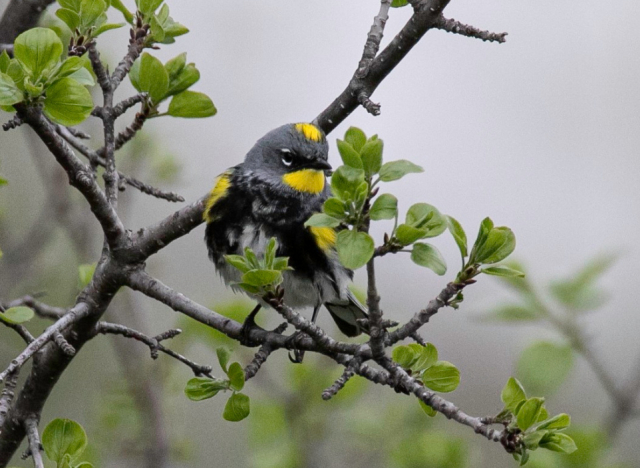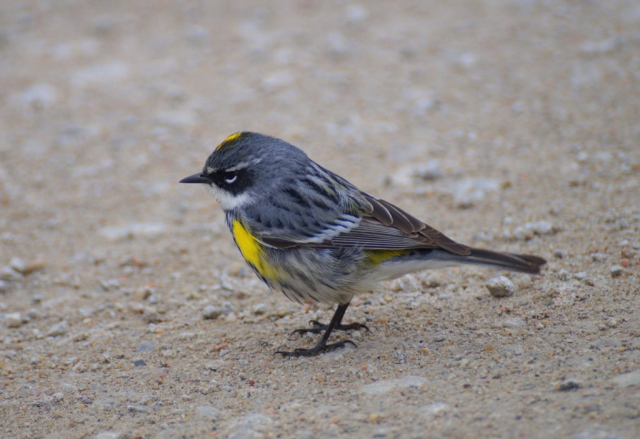Setophaga coronata
Five subspecies are recognized (AviList 2025), three north of Mexico: hooveri of Alaska and northwestern Canada, wintering to western US and Central America, coronata of south-central and southeastern Canada to northeastern US, wintering through southern US to Central America and Caribbean, and auduboni of southwestern Canada and western US, wintering to western Honduras. Southern subspecies are nigrifrons of western Mexico and goldmani of southern Mexico and Guatemala.
Genomic studies suggest three groups within the five subspecies, coronata and hooveri, auduboni and nigrifrons, and goldmani (Toews 2016); a proposal to split the three groups as species is before AOS (2017) but has not been finalized. Further research is needed on the contact zone between coronata and auduboni (AviList 2025). Since 1983 Myrtle and Audubon’s Warblers have been treated as conspecifics due to the presence of this hybrid zone from northwest British Columbia to southwest Alberta (Barrowclough 1980, AOU 1983, Brelsford and Irwin 2009). Although genetic distance between coronata and auduboni is slight, the hybrid zone has remained narrow and stable, suggesting assortative mating (Hunt and Flaspohler 2020).
Genetic evidence suggests that, rather than Myrtle and Audubon’s arising as a result of allopatric isolation, Audubon’s is a rare avian example of a taxon of hybrid origin. Its genome contains alleles derived from both presumed parental taxa, migratory Myrtle and non-migratory Black-fronted (nigrifrons) (Brelsford et al 2011); isotope studies show that Audubon’s possesses Myrtle rather than Black-fronted genes at an allele associated with migration (Toews et al 2014), resulting in the migratory capability of Audubon’s Warbler.
Myrtle Warbler
S.c coronata
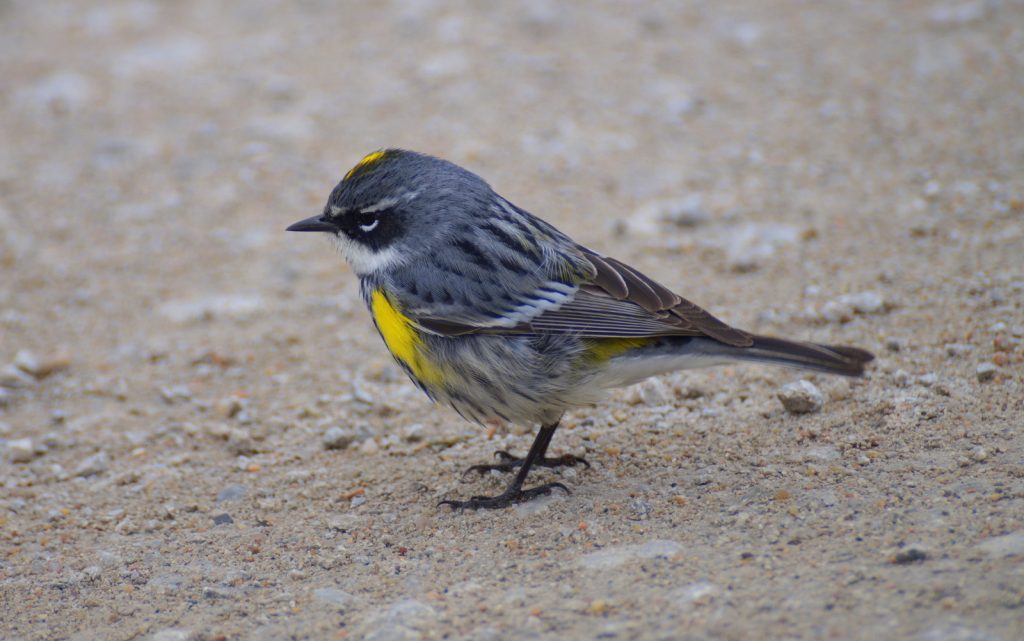
Status: Common regular spring and fall migrant statewide. Rare regular winter visitor from North Platte and Platte River Valley counties south and Missouri River Valley in northeast, rare casual elsewhere.
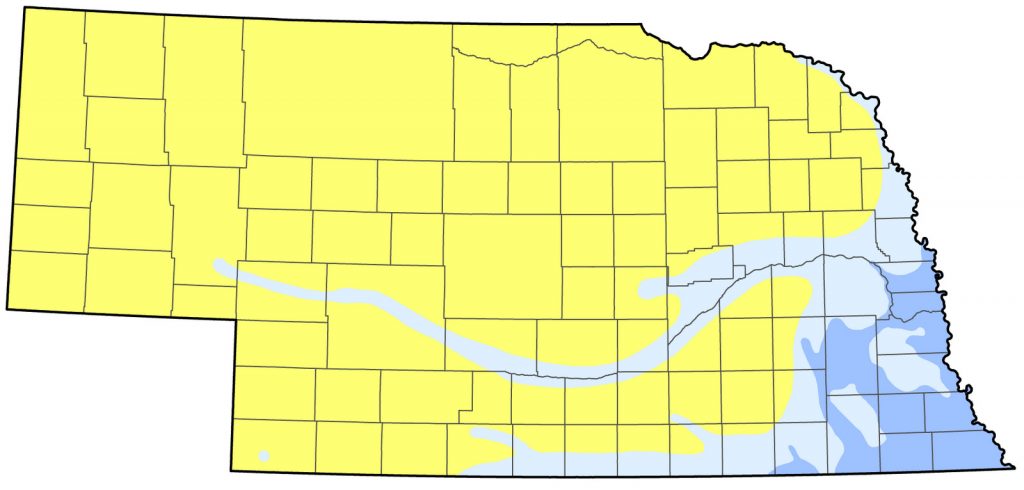
Documentation: Specimen: UNSM ZM6857, 20 Apr 1901 Havelock, Lancaster Co.
Taxonomy: Two subspecies are recognized, hooveri and coronata (see above).
The westernmost populations of S. c. coronata have been considered separable as hooveri (Curson et al 1994; Dunn and Garrett 1997). Although Pyle (1997) considered differences between coronata and hooveri only clinal and insufficient to warrant subspecific status, AviList (2025) retains hooveri along with coronata as subspecies of S. coronata.
Rapp et al (1958) stated that hooveri occurred in Nebraska. Both hooveri and coronata presumably migrate through Nebraska.
Intergrades (hybrids if coronata and auduboni are treated as separate species) are discussed in the “Hybrids” section under “Myrtle Warbler x Audubon’s Warbler (hybrid)“.
Changes since 2000: Numbers occurring during winter increased sharply 2005-2016 based on CBC data per party hour (Figure 1). That trend has ceased and appears to have reversed course as relatively low numbers were recorded on CBCs in 2019-2020 and 2020-2021. Prior to winter 2007-2008 there had been only 11 records in all for Feb, but numbers began to increase subsequently until the unprecedented count of 16 in Feb 2014-2015. See Winter below.
Spring: winter <<<>>> May 30, 31, 31 (south, east); Apr 8, 9, 10 <<<>>> May 20, 21, 21 (north, west)
Earlier dates north and west (Myrtle) are 13 Mar 2011 Custer Co, 30 Mar 2018 Knox Co, 2 Apr 2012 Custer Co, 4 Apr 2010 Custer Co, and 6 Apr 2019 Brown Co.
Later dates north and west are 31 May 2025 Scotts Bluff Co, 31 May 2025 (2) Kimball Co, 31 May 2025 Wildcat Hills SRA, Scotts Bluff Co, 3 Jun 2018 Brown Co, and 12 Jun 2010 Garden Co. Jun dates were reported as “Myrtle” warblers.
Migrants are discernible in the north and west by mid-Apr; peak counts occur in early to mid-May.
There are a few reports Jun-Aug without information on subspecies of these sightings; these are included in Audubon’s Warbler.
- High counts: 755 in Sarpy Co 11 May 1996, 340 at Marsh Wren Community Wetlands, Lancaster Co 3 May 2019, 260 at North Platte NWR, Scotts Bluff Co 3 May 1995, and 255 in Lancaster Co 10 May 1996.
Fall: Aug 30, 30, 31 <<<>>> Nov 6, 6, 8 (north, west); Sep 11, 11, 12 <<<>>> winter (south, east),
An extraordinary record was of an apparent adult male in Sarpy Co 29 Jul 2021 (Mary Clausen, photo).
Later dates in the north and west are 10 Nov 2022 Holt Co, 10 Nov 2023 Kimball Co, and 13 Nov 2015 Brown Co.
Migrants become noticeable in mid-Sep and peak migration is in early Oct. Numbers and distribution thereafter begin to decline, with the Sandhills and northern Panhandle vacated in Nov and by Dec most reports are from the south and east.
Later reports (Dec-Feb) away from the south and east are discussed under Winter.
- High counts: 133 at Cunningham Lake, Douglas Co 8 Oct 2022, 129 in Washington-Douglas Cos 13 Oct 1996, 120 in Nance Co 8 Oct 2006, and 120 at Branched Oak Lake SRA, Lancaster Co 6 Oct 2018.
Winter: As noted under Fall (above), by Dec most birds are found in the south. This distribution persists through Feb, but with much reduced numbers that vary markedly from year to year. Prior to winter 2006-2007, there had been only 11 reports for the state in Feb, but beginning in 2007, Feb reports have increased markedly, with nine in the winters 2006-2007 through 2013-2014, followed by an unprecedented 16 reports 2014-2015. There was a similar influx in winter 2015-2016; reports that winter brought the all-time total number of Feb reports to 41, 21 of these in the 2014-2015 and 2015-2016 winters. Reported numbers in recent Februarys have been variable, with best counts five in 2021-2022 and six in 2024-2025. Reports in Dec in the north and west are 4 Dec 2016 Knox Co, 6 Dec 1988 Boone Co (Cortelyou 1989), 8 Dec 2020 (2) Knox Co, 19 Dec 2018 Wheeler Co, 20 Dec 2018 Garfield Co, 22 Dec 2020 Garfield Co, 28 Dec 2001 Keya Paha Co, 28 Dec 2010 Loup Co, two on 29 Dec 2001 Calamus-Loup CBC, and eight on 30 Dec 1995 Calamus-Loup CBC. Statewide, numbers are lowest in Jan-Feb, when there are few reports in the north and west: 1 Jan 2015 Knox Co, 27 Jan 2019 Brown Co, 30 Jan 2010 Custer Co, 14 Feb 2015 Custer Co, and 16 Feb 2011 Wheeler Co.
Audubon’s Warbler
S.C. auduboni
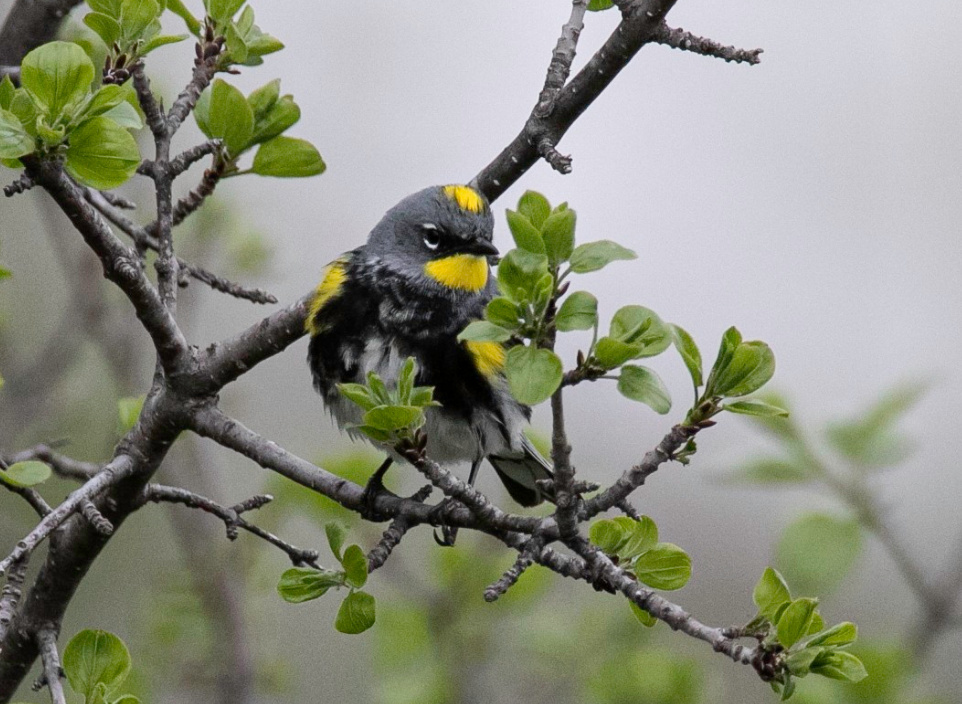
Status: Fairly common regular spring and fall migrant west and west central, uncommon east central, rare casual east. Uncommon regular breeder northwest. Rare casual winter visitor west central.
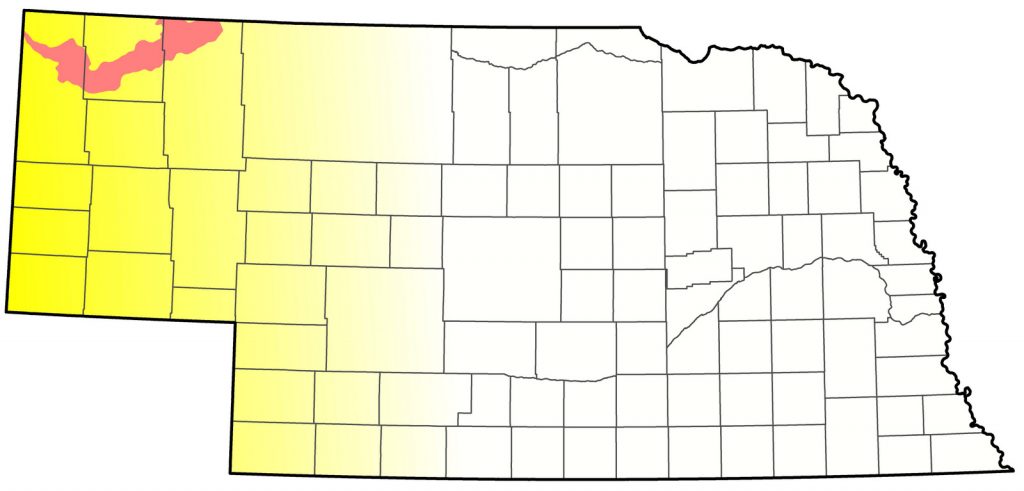
Documentation: Specimen: UNSM ZM6847, 21 May 1900 Sioux Co.
Taxonomy: See discussion under Yellow-rumped Warbler above.
Spring: Apr 21, 23, 23 <<<>>> summer (Pine Ridge); Apr 12, 13, 14 <<<>>> Jun 5, 5, 6 (elsewhere)
Earlier dates elsewhere are 3 Apr 2024 Crescent Lake NWR, Garden Co, 5 April 2024 Lake Ogallala, Keith Co, and 9 Apr 2022 Dundy Co. For Mar dates, see Winter.
Later dates elsewhere are all from the Wildcat Hills, Scotts Bluff Co (see Summer), except for 10 Jun 2010 western Cherry Co.
Migration occurs mostly in May, and stragglers occur in the east. Extreme dates for migrants at Barr Lake, Colorado are 7 Apr and 6 Jun (Andrews et al 2002).
There are 19 reports for the east 16 Apr-16 May; the 12 documented records are 18 Apr 2011 South Bend, Cass Co, 18 Apr 2011 Platte River SP, Cass Co, 21 Apr 2019 photo Lancaster Co, 26 Apr 2024 Douglas Co, 28 Apr 2019 Howard Co, 25 Apr 2013 Lancaster Co, 27 Apr 2015 photo Omaha, Douglas Co, 3 May 2017 Dodge Co, 4 May 2011 Knox Co, 6 May 2022 Douglas Co, 7 May 2021 Fontenelle Forest, Sarpy Co, and 16 May 2015 Madison Co.
In the eastern Rainwater Basin there are three reports 15 Apr-13 May (Jorgensen 2012), and, in Lincoln Co, Tout (1947) cited occurrence 23 Apr-10 May. At NNF Bessey, Thomas Co, it occurs regularly in spring and fall (Bray 1994). We believe Ludlow’s (1935) description of this taxon as a “common migrant” in Webster County with reports 18 Apr-21 May doubtful that far east.
- High counts: 37 at Oliver Reservoir, Kimball Co 4 May 2024, 21 at Gering Cemetery, Scotts Bluff Co 2 May 2024, and 18 at Gering Cemetery, Scotts Bluff Co 8 May 2023.
Summer: Audubon’s Warbler breeds in open ponderosa pine woods, with a preference for areas near deciduous trees (Johnsgard 1979), on the Pine Ridge in Sioux, Dawes, and Sheridan Cos. During the first BBA for the period 1984-1989 (Mollhoff 2001a), reports were from Sioux and Dawes Cos, but breeding was not confirmed in Sheridan Co until the second BBA period 2006-2011 (Mollhoff 2016). It was present in summer in Sheridan Co in 1992 and 1993. Reports of breeding apart from the BBAs include a nest with eggs near Warbonnet Canyon, Sioux Co 27 Jun 1901 (Cary; UNSM ZM9092; Mollhoff 2022), one of a pair along Pants Butte Road, Sioux Co carrying food 6 Jul 2002, and a nest with half-grown young 12 Jun 1999 in West Ash Canyon, Dawes Co (Mollhoff 2001b).
In the Wildcat Hills of Scotts Bluff, Banner, and Morrill Cos, both the first and second BBAs showed a total of six reports, (Mollhoff 2001a, 2016), although nesting there has not been confirmed. There are 32 Scotts Bluff Co reports Jun-Jul, apart from those in the BBAs, beginning 4 Jul 1992, 28 of these 2017 through 2025. One was in the Banner Co section 7 Jul 2001.
There are a few older undocumented reports Jun-Aug away from the breeding range.
- Breeding phenology: Nest building: 20 May
- Eggs: 30 May-27 Jun Nestlings: 7-12 Jun Fledglings: 28-30 Jun
Fall: Aug 21, 21, 22 (away from Pine Ridge) <<<>>> Nov 3, 3, 3
Later dates are 10 Nov 2023 Oliver Reservoir, Kimball Co, 14 Nov 2023 (4) Sutherland Reservoir, Lincoln Co, and 23 Nov 2023 Ogallala, Keith Co. The latest specimen date for Audubon’s Warbler is 27 Sep 1920 Sioux Co (UNSM ZM6844).
Individuals appear in the Panhandle away from breeding areas in late Aug. Tout (1947) cited occurrence 24 Sep-Oct 9 in Lincoln Co. Extreme dates at Barr Lake, Colorado, are 6 Sep and 23 Nov (Andrews et al 2002).
Rosche (1994) stated that Audubon’s is “much scarcer” than Myrtle in the Keith Co area in fall and departs earlier than Myrtle.
The only reports from the east are 18 Sep 2021 Douglas Co, 2 Oct 2020 Lancaster Co, two on 11 Oct 1934 Webster Co (Ludlow 1935), 17 Oct 2018 Knox Co, and 3 Nov 2014 Wayne Co. One was at Bader Park, Merrick Co 26 Sep 2023.
- High counts: 32 at Oliver Reservoir, Kimball Co 20 Sep 2003, 30 there 26 Sep 2023, and 24 at Rock Creek SRA, Dundy Co 27 Sep 2020.
Winter: There are 19 records Dec-Mar, including 10 from the Lake McConaughy area, Keith Co, and three at Sutherland Reservoir, Lincoln Co. Others are 2 Dec 2023 Pleasanton, Buffalo Co, 15 Dec 1979 Scotts Bluff CBC, 15 Dec 2015 Branched Oak Lake, Lancaster Co, 18 Feb 2018 Lincoln Co, 1 Mar 2012 Lincoln Co, and 18-25 Mar 2013 Lincoln Co. These records suggest wintering may occur in Lincoln Co and in Keith Co. A good count was the seven at Sutherland Reservoir 22 Dec 2023. Maps in eBird show numerous Jan-Feb records in northeastern Colorado (eBird.org, accessed Jan 2024).
Images
Abbreviations
BBA: Breeding Bird Atlas
CBC: Christmas Bird Count
NNF: Nebraska National Forest
SRA: State Recreation Area
SP: State Park
UNSM: University of Nebraska State Museum
WMA: Wildlife management Area
Literature Cited
Andrews, R., R. Righter, M. Carter, T. Leukering, and A. Banks. 2002. Birds of Barr Lake and Surrounding Areas 1888 through 1999. Ornithological Monograph No. 1, Rocky Mountain Bird Observatory, Brighton, Colorado, USA.
American Ornithologists’ Union [AOU]. 1983. The AOU Check-list of North American birds, 6th ed. Allen Press, Lawrence, Kansas, USA.
AOS. 2017. AOU Classification Committee – North and Middle America. Proposal Set 2017-A. Split Yellow-rumped Warbler Setophaga coronata into three species. https://americanornithology.org/wp-content/uploads/2020/02/2017-A.pdf.
AviList Core Team, 2025. AviList: The Global Avian Checklist, v2025. https://doi.org/10.2173/avilist.v2025.
Bray, T.E. 1994. Habitat utilization by birds in a man-made forest in the Nebraska Sandhills. M.S. thesis, University of Nebraska-Omaha.
Barrowclough, G.F. 1980. Genetic and phenotypic differentiation in a Wood Warbler (Genus Dendroica) hybrid zone. Auk 97 :655-668.
Brelsford, A., and D.E. Irwin. 2009. Incipient speciation despite little assortative mating: the Yellow-rumped Warbler hybrid zone. Evolution 63: 3050-3060 https://doi.org/10.1111/j.1558-5646.2009.00777.x.
Brelsford, A., B. Mila, and D.E. Irwin. 2011. Hybrid origin of Audubon’s Warbler. Molecular Ecology 20: 2380–2389.
Cortelyou, R.G. 1989. 1988 Christmas Count. NBR 57: 3-9.
Curson, J., D. Quinn, and D. Beadle. 1994. Warblers of the Americas. Houghton Mifflin Company, Boston, Massachusetts, USA.
Dunn, J.L., and K.L. Garrett. 1997. A field guide to warblers of North America. Houghton Mifflin Company, Boston, Massachusetts, USA.
Hunt, P.D. and D.J. Flaspohler. 2020. Yellow-rumped Warbler (Setophaga coronata), version 1.0. In Birds of the World (P. G. Rodewald, Editor). Cornell Lab of Ornithology, Ithaca, NY, USA. https://doi.org/10.2173/bow.yerwar.01.
Johnsgard, P.A. 1979. Birds of the Great Plains: breeding species and their distribution. University of Nebraska Press, Lincoln, Nebraska, USA.
Jorgensen, J.G. 2012. Birds of the Rainwater Basin, Nebraska. Nebraska Game and Parks Commission, Lincoln, Nebraska, USA.
Ludlow, C.S. 1935. A quarter-century of bird migration records at Red Cloud, Nebraska. NBR 3: 3-25.
Mollhoff, W.J. 2001a. The Nebraska Breeding Bird Atlas 1984-1989. Nebraska Ornithologists’ Union Occasional Papers No. 7. Nebraska Game and Parks Commission, Lincoln, Nebraska, USA.
Mollhoff, W.J. 2001b. 1999-2000 Nebraska nesting report. NBR 69: 92-101.
Mollhoff, W.J. 2016. The Second Nebraska Breeding Bird Atlas. Bull. Univ. Nebraska State Museum Vol 29. University of Nebraska State Museum, Lincoln, Nebraska, USA.
Mollhoff, W.J. 2022. Nest records of Nebraska birds. Nebraska Ornithologists’ Union Occasional Paper Number 9.
Pyle, P. 1997. Identification Guide to North American Birds. Part I, Columbidae to Ploceidae. Slate Creek Press, Bolinas, California, USA.
Rapp, W.F. Jr., J.L.C. Rapp, H.E. Baumgarten, and R.A. Moser. 1958. Revised checklist of Nebraska birds. Occasional Papers 5, Nebraska Ornithologists’ Union, Crete, Nebraska, USA.
Rosche, R.C. 1994. Birds of the Lake McConaughy area and the North Platte River valley, Nebraska. Published by the author, Chadron, Nebraska, USA.
Toews, D.P.L., A. Brelsford, and D.E. Irwin. 2014. Isotopic variation across the Audubon’s–myrtle warbler hybrid zone. Journal of Evolutionary Biology 27: 1179–1191.
Tout, W. 1947. Lincoln County birds. Published by the author, North Platte, Nebraska, USA.
Recommended Citation
Silcock, W.R., and J.G. Jorgensen. 2025. Yellow-rumped Warbler (Setophaga coronata). In Birds of Nebraska — Online. www.BirdsofNebraska.org
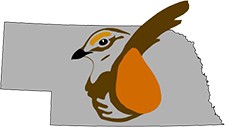
Birds of Nebraska – Online
Updated 1 Sep 2025
I
